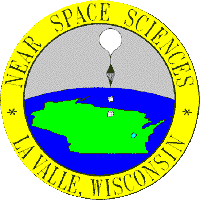
THANK YOU FOR
VISITING NEAR SPACE SCIENCES
PLEASE
ALLOW A FEW MOMENTS FOR THE PAGE TO LOAD COMPLETELY
STUDENT
LAUNCHES
NSS
is right now

More details below.
Based on Education level, older ,do more. Example: At High school
& University levels, they build & test more elaborate operating
systems. The lower grade levels build simpler payloads and operate with
higher levels of supervision, etc.
1) Students learn about satellite basics during a class session, developed
by the teacher and the NSS
personnel. The mission is of their own design. The NSS
team will advise the group as the possibility of their design/concept
if it might work. The imagination of the students provide the good portion
of the excitement of their mission. They know that it is of their own design
and ideas!
In the classroom a short study will be given as what will most likely
happen during their mission, depending on their exact payload configuration.
As well as what needs to be done during the mission to ensure it is successful.
.
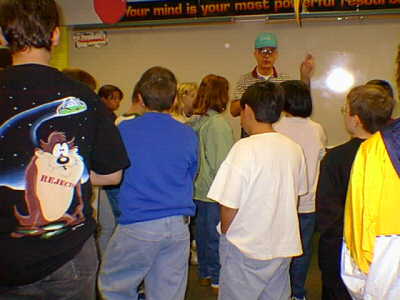
.Pre-flight
briefing
.

.Operation
station training.
.
. 2)
Then launch day has arrived and they launch their simulatedSatellite at
their school & operate mission control.
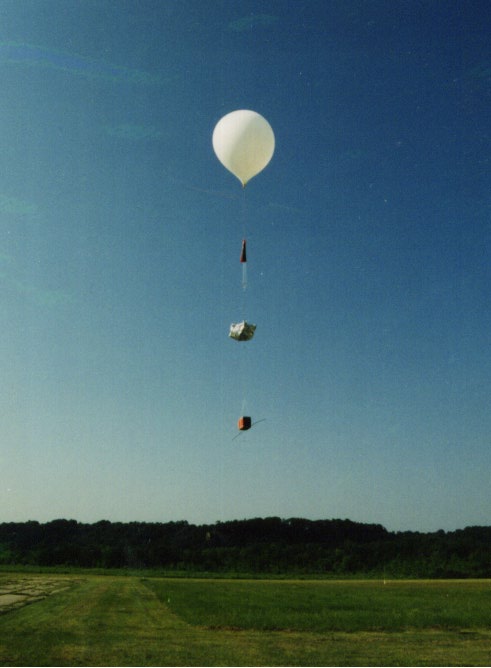
We have
lift-off!
.
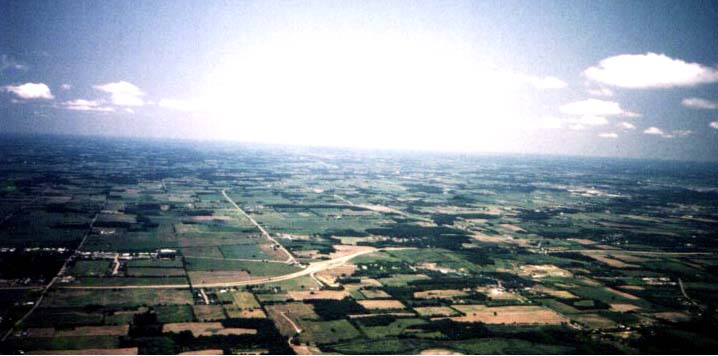
Only 5
minutes after liftoff it's at 5000 ft!
.
During the flight they learn about communications via radios &computers;
problem solving and complex tech project organization.
.
.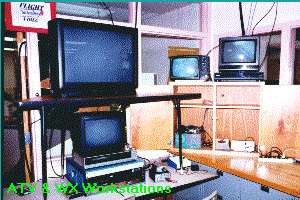
The television
downlink station
.
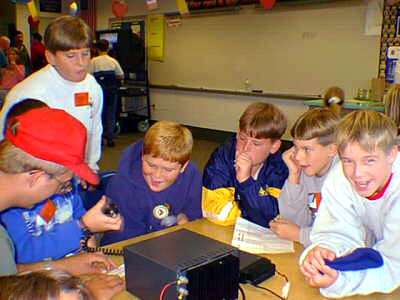
Communicating
through the payload
.
Also if there is a "Participating" school present at the launch, they can
help them with learning process of a mission to the "Edge of Space"! (Schools
don't have to launch the satellite in order to participate.) Roughly 2
hours after liftoff your payload has reached the "EDGE of SPACE! The view
would be similar to what is seen below. But with one major difference,,
IT IS LIVE AND MOVING!
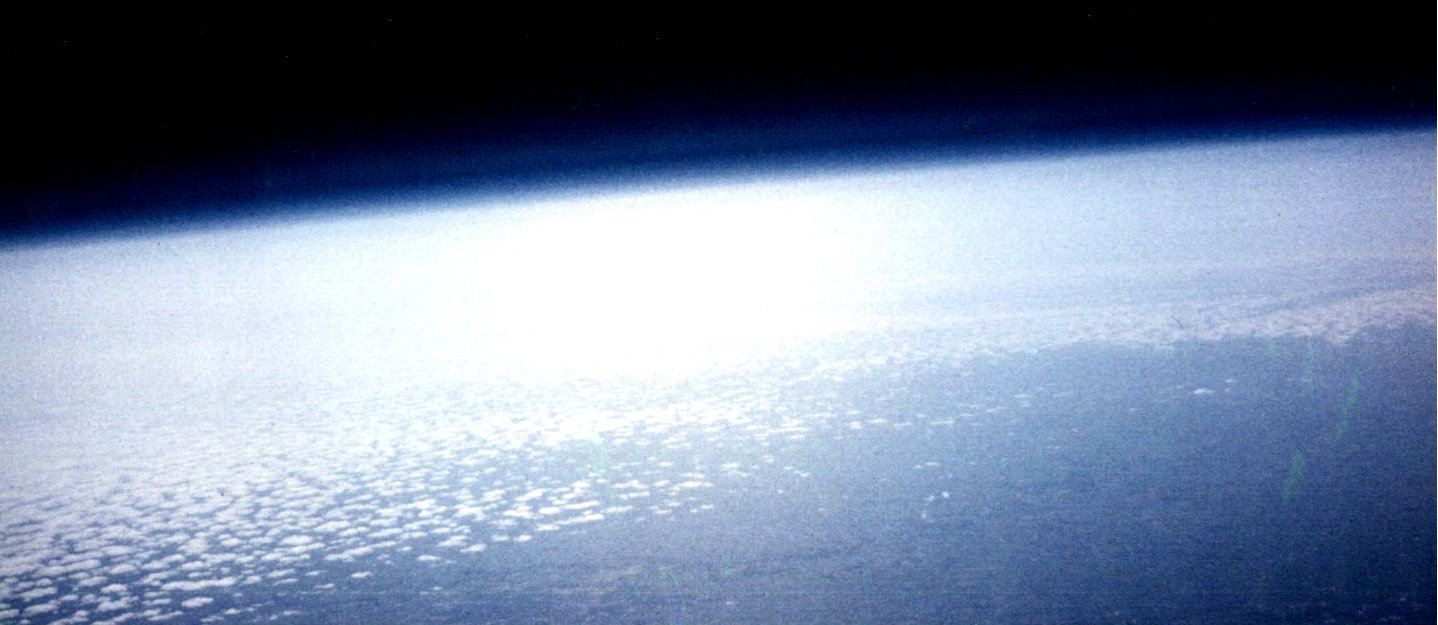 Of course we
always want to get the payload back for more future flights, NSS
has a dedicated group of chase and recovery teams waiting downrange for
the payload to come to them for recovery.
Of course we
always want to get the payload back for more future flights, NSS
has a dedicated group of chase and recovery teams waiting downrange for
the payload to come to them for recovery.

Where is the payload?
For that matter,, where
on
this map are we?!
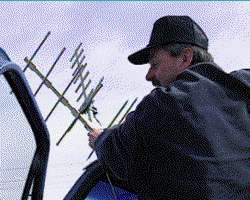
Directional antennas
help pinpoint the location
of the payload.
Saved from
the corn!
EDUCATIONAL
BENEFITS
.
1. REAL TIME
EDUCATION
.
Nothing
beats real live hands-on learning. This kind of stuff lasts a lifetime.
.
2. EVERY STUDENT
GETS INVOLVED
.
There are dozens
of positions on the launch teams, and everyone can be placed at a position
on the team that best suits their personal interests or capabilities.
.
3. LEARN ABOUT SATELLITES.
.
Satellites
are becoming a more everyday part of our lives, learning about them and
understanding them makes using them even more enjoyable and less of a mystery.
.
.
.4. STUDENTS LEARN
PROBLEM SOLVING SKILLS
.
Since
the students are completely building from the ground up their satellite
they will of course run into a few problems. NSS personnel will help them
through the roadblock, We wont fix it for them, but suggest possible things
to look for as to why it is a problem and what could you do to cure it.
.
5. THERE ARE NO MISTAKES
.
Mistakes are just
learning experiences, waiting to be understood. Once the mistake is understood
you have learned something and it is not a mistake anymore!
.
6. ASK IF YOU WANT
TO LEARN
.
If
you do not know it, you have to ask someone that does. Learning doesn't
get any more basic than this. And we encourage greatly the asking
of questions! Most of our personnel here at NSS
run a special program called ICQ.
It allows us to know if anyone else from the group is even on-line. And
if a teacher or student has a question and they also are running this program
they can have a live "CHAT" session
with the NSS
member, or for that matter anyone else in their group. We can even hold
"live"
group sessions where as many of the group can meet on-line and discuss
the project. And of course our E-Mail box atNSS
is always open!
Or
if you want information about ICQ before downloading it follow this link
for full details of what this program can do for you.

If
you would like to download the ICQ system follow the link below and just
follow the instructions. Near Space Sciences' ICQ number is, 2010540.

NSS
is right now

If someone is online
use the instant message
sender below
to send them a message,
and they
will get back to you
as soon as possible.
Near Space Sciences are developing even better ways for all of us to keep
in touch. Stop here often for new ways to communicate.
Return
to the NSS and your School Page










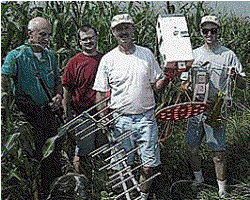

![]()